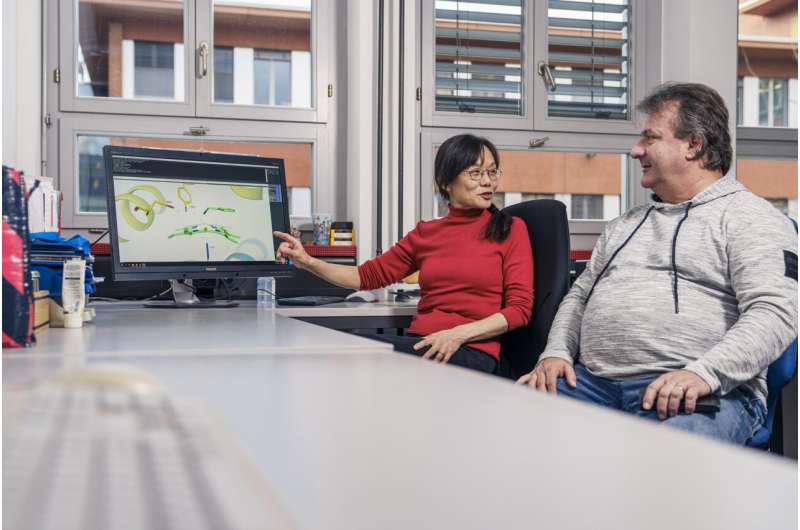Xiaodan Li and Richard Kammerer have unveiled an enzyme with the potential to transform the circular economy. The visualization showcases a key aspect of the active center of this groundbreaking enzyme. Credit: Paul Scherrer Institute/Markus Fischer
Scientists at the Paul Scherrer Institute PSI have successfully characterized the enzyme styrene oxide isomerase, opening doors to the production of valuable chemicals and drug components in an eco-friendly manner. This breakthrough is detailed in the prestigious journal Nature Chemistry.
Enzymes, nature’s powerful tools, offer a sustainable approach to substance production under mild conditions, promoting environmentally friendly chemistry practices. PSI researchers have meticulously examined the enzyme styrene oxide isomerase, a biological counterpart to the Meinwald reaction, a significant process in organic chemistry.
“This enzyme, originating from bacteria, has been known for years,” explains Richard Kammerer from PSI’s Biomolecular Research Laboratory. Xiaodan Li further elaborates, ”However, its practical utility was limited due to a lack of understanding of its mechanism.” The research team led by Kammerer and Li has unraveled the enzyme’s structure and functionality.
Microorganisms possess specialized enzymes that aid in breaking down harmful substances for sustenance. Styrene oxide isomerase is one such enzyme, working alongside two others to support certain bacteria in metabolizing the hydrocarbon styrene.
The enzyme’s role in catalyzing a specific step in the reaction, breaking down a three-membered ring in styrene oxide, showcases its high specificity and ability to generate essential precursors for medicinal purposes.
One key advantage lies in the enzyme’s ability to produce only one product, crucial in drug development where stereospecificity is paramount for creating effective precursor molecules.
2024-05-14 06:00:03
Article from phys.org






















